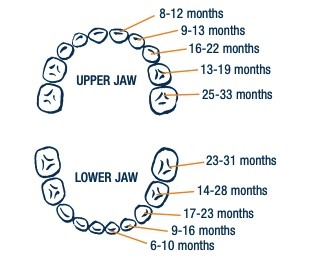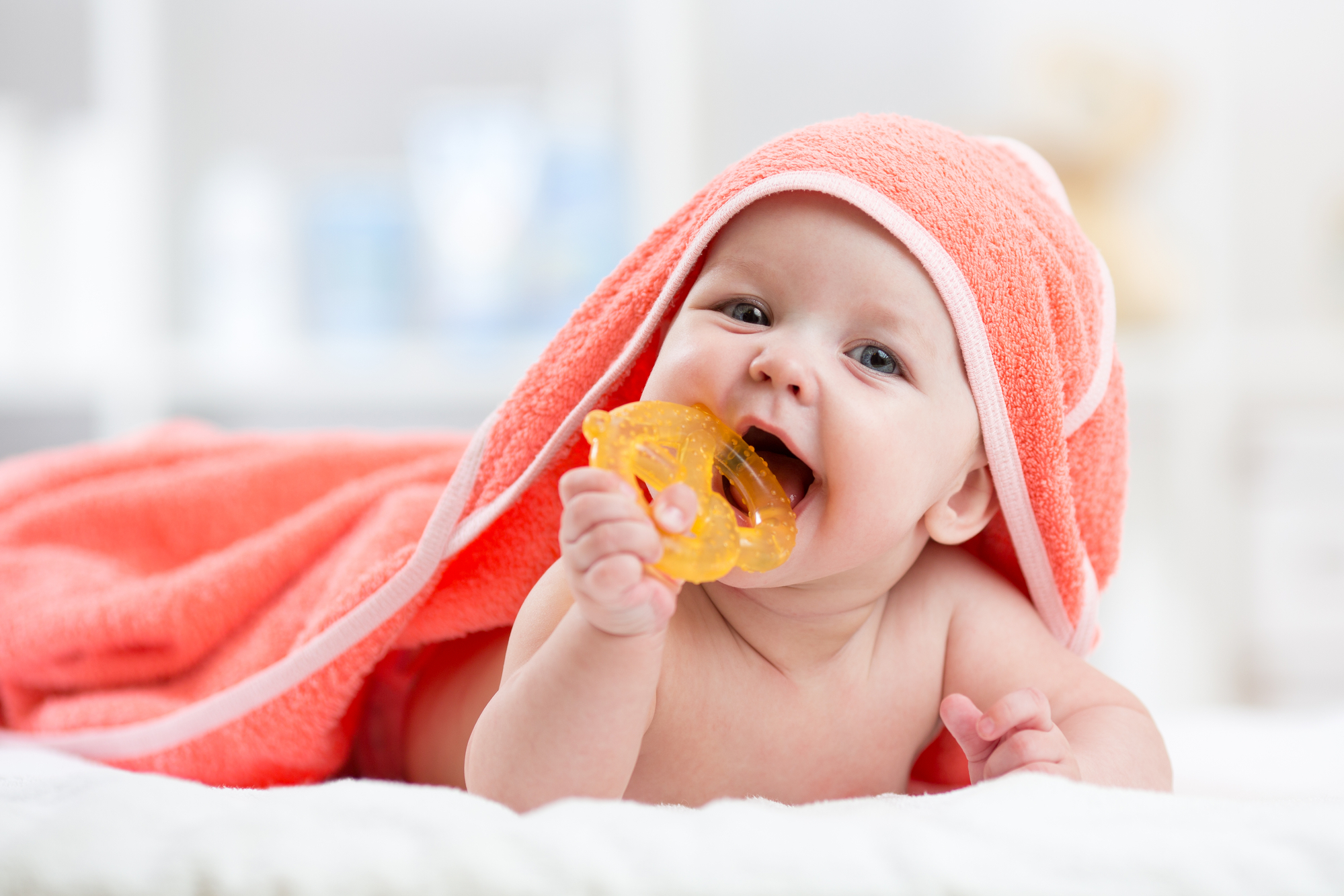If your baby is waking several times during the night, it is unlikely to be directly related to teething. A baby’s deepest sleep occurs from bedtime through to midnight, while from midnight until 7 AM, they enter a lighter sleep phase. During this time, frequent awakenings are common, and babies may need help settling back to sleep.
The Process of Teething
When your baby is born, they already have their primary (baby) teeth beneath the gums, though they are not yet visible. Teething typically follows a predictable pattern:
- Timing: Most children will have all 20 baby teeth by the age of three.
- Gender Differences: Girls’ teeth often appear earlier than boys’.
- Eruption Sequence: Teeth usually emerge in pairs, starting with the bottom front teeth, followed by the top two middle teeth, and then progressing along the sides and back.
- Variability: Every baby is different! Some babies may sprout teeth early, while others take their time. If your baby’s teeth don’t follow the typical timeline, don’t worry—variations are normal.

Evidence-Based Research on Teething and Symptoms
Multiple studies have investigated the symptoms commonly attributed to infant teething, aiming to distinguish between myths and evidence-based findings.
But what does the research say?
Common Symptoms Associated with Teething
A study published in the Journal of Clinical Pediatric Dentistry found that the most commonly reported teething symptoms include:
- Irritability (40.5%)
- Fever (38.9%) (Mild temperature elevation only, not high fever)
- Diarrhea (36.0%)
- Itching and gum-rubbing (33.6%)
These symptoms were significantly more frequent only during the four days before, the day of, and three days after a tooth’s appearance—a well-defined eight-day teething window.
Symptoms NOT Linked to Teething
Another study published in Pediatrics & Child Health debunked some common misconceptions. Symptoms such as:
- High fever (over 39°C)
- Persistent diarrhea
- Severe sleep disturbances
- Frequent loose stools
- Decreased appetite for milk
- Chest congestion or persistent cough
- Rashes (other than facial rashes)
- Vomiting
…were not consistently associated with teething. If your baby experiences these symptoms, it is important to rule out other illnesses and consult a healthcare professional.
Understanding these findings can help parents and caregivers provide appropriate care during their child’s teething phase, ensuring comfort while avoiding unnecessary interventions.
Managing Teething Discomfort
If your baby seems uncomfortable while teething, there are safe and effective ways to help them through it.
Pain Relief (Analgesia)
- Many parents use pain relief sparingly, ensuring it is safe and appropriate for their baby’s age.
- Always consult a healthcare professional before giving pain medication.
Teething Gels
- Some teething gels containing lidocaine have been removed from markets due to safety concerns.
- Safer alternatives are available—your pharmacist can recommend the best options.
Teething Rings & Natural Remedies
- Cool Teething Aids: Chilled (not frozen) teething rings, a clean, wet washcloth, or cool fruits like watermelon can help soothe sore gums.
- Gum Massage: Gently rubbing your baby’s gums with a clean finger can provide relief.
- Homeopathic Remedies: Some parents explore homeopathic teething relief options, though their effectiveness remains debated in medical research.
Common Teething Myths






Strategies for Parents
Stick to a Routine: Keeping a consistent bedtime routine can help soothe a teething baby. Gentle rocking, singing, and a warm bath can create a sense of comfort.
Extra Cuddles Help: Some babies simply need more comfort and reassurance when they are teething. Don’t worry about “spoiling” your baby—this phase will pass!
Take Care of Yourself Too: Teething can lead to disrupted sleep, leaving parents exhausted. Try to rest when you can, and ask for help from your partner, family, or friends when needed.
Conclusion
Teething is a natural and temporary part of your baby’s development. While it can cause discomfort, the symptoms are often mild and short-lived. Understanding the facts—backed by research—can help you confidently support your baby through this phase with safe, effective remedies. Remember, if your baby experiences severe symptoms such as a high fever, persistent diarrhea, or vomiting, consult a healthcare professional to rule out other underlying conditions.
You’ve got this, and soon, those first little teeth will be shining in all their glory!
You may also like to read:
Teething, the things you need to know




 Nappy rash? We’ve got you covered!
Nappy rash? We’ve got you covered! 

 , we break down:
, we break down: What causes nappy rash
What causes nappy rash How to prevent it
How to prevent it The best ways to soothe your baby’s sensitive skin
The best ways to soothe your baby’s sensitive skin
 Read the full guide now!
Read the full guide now!

 New parents, this one’s for you!
New parents, this one’s for you! 




